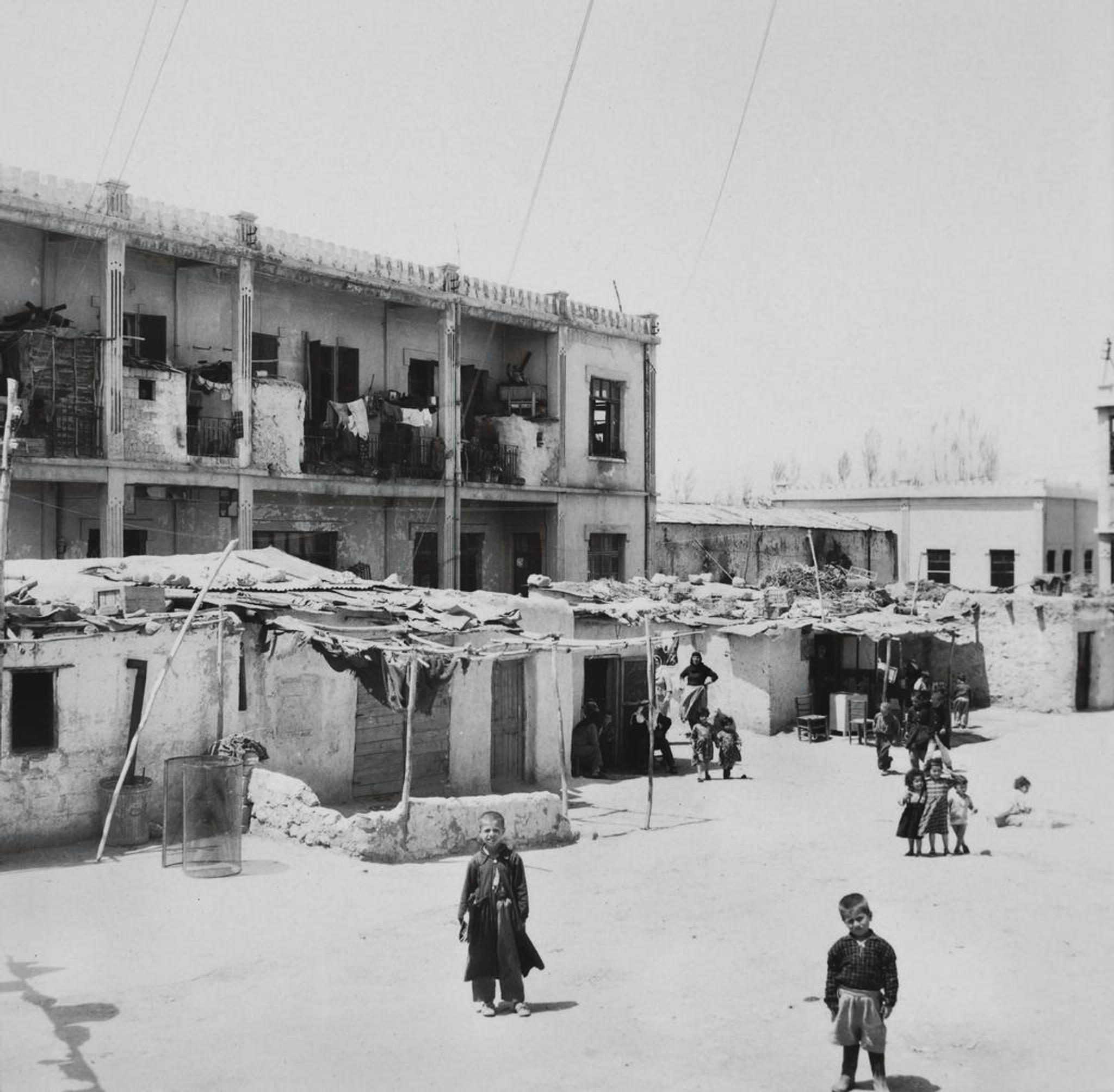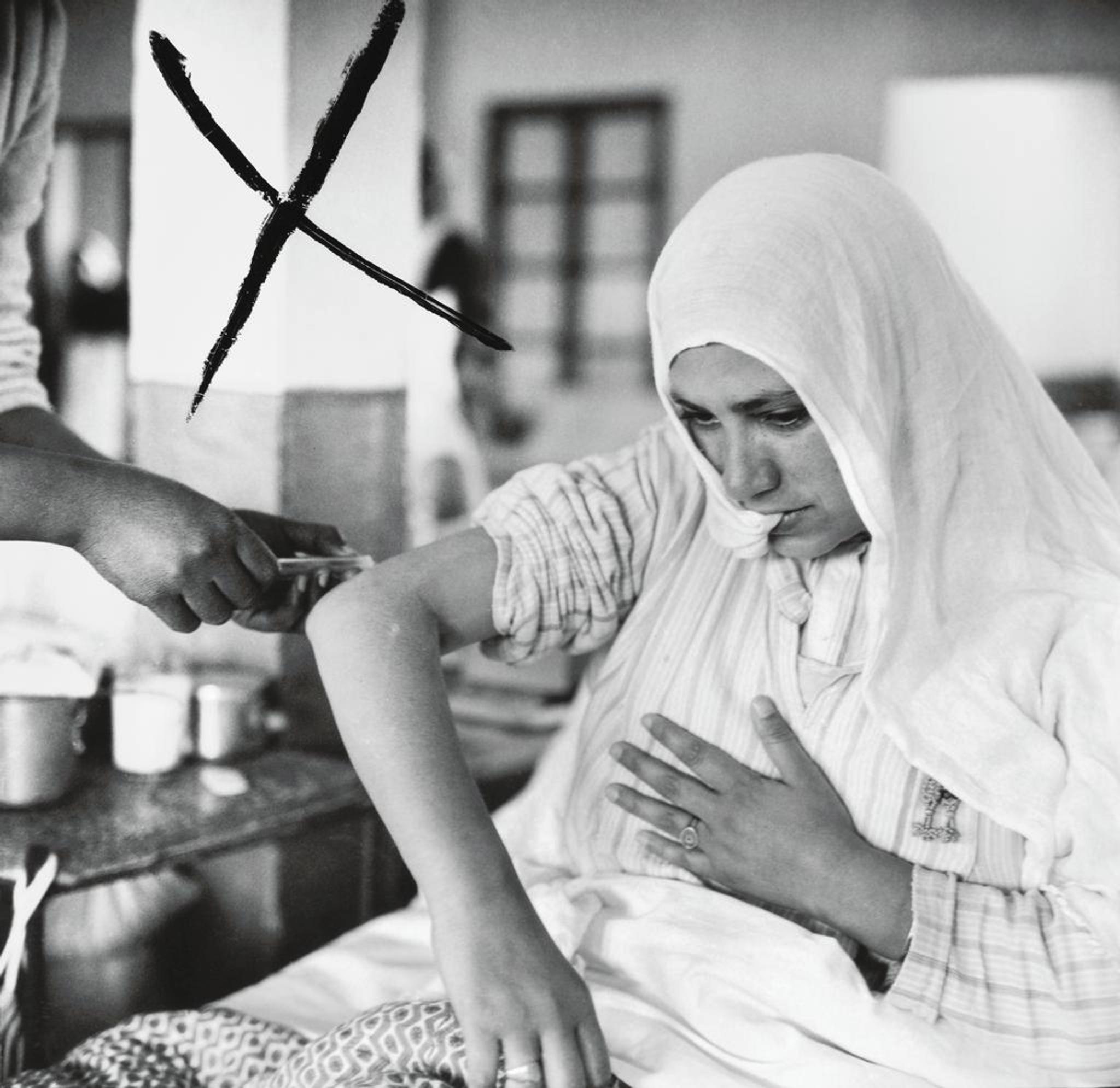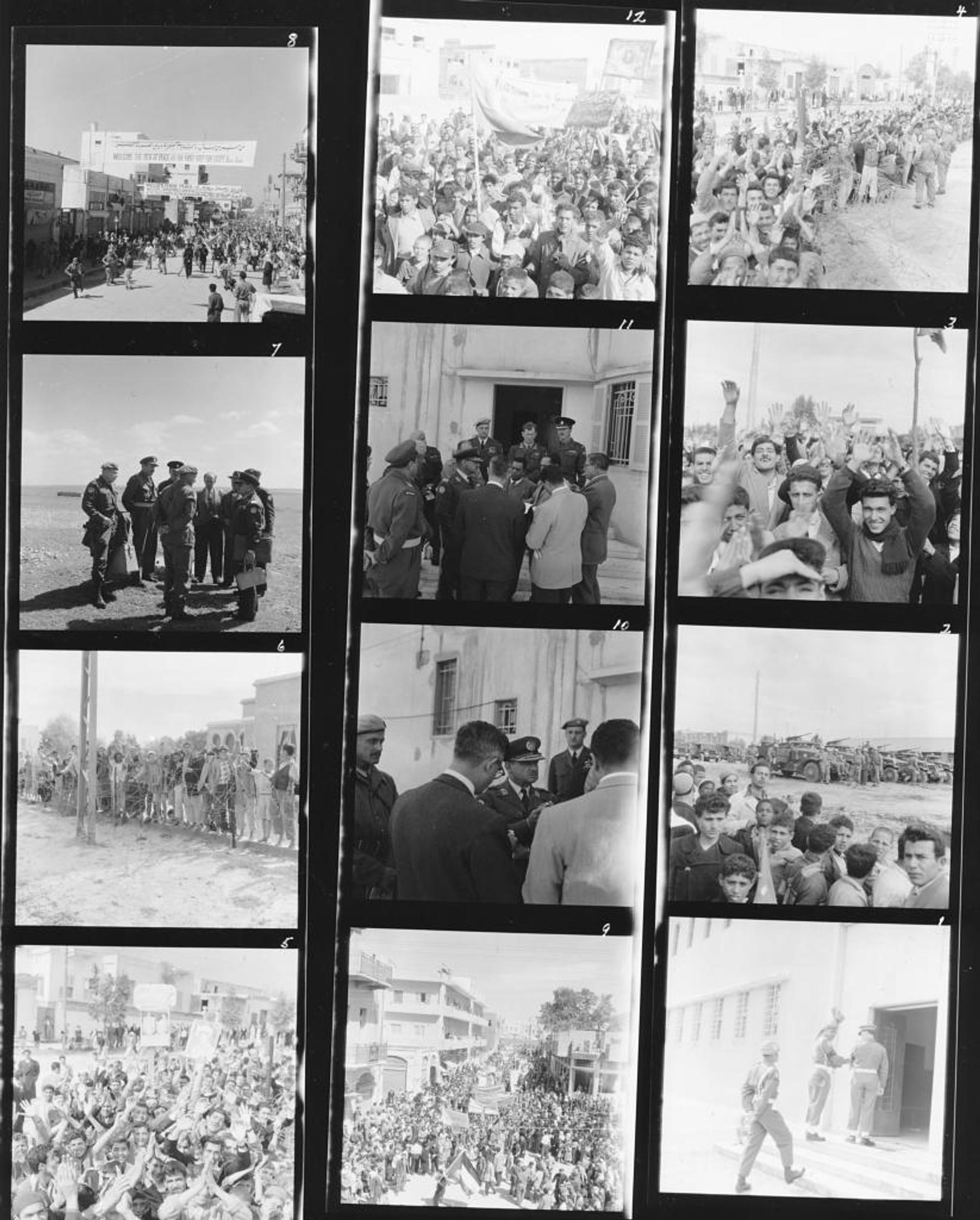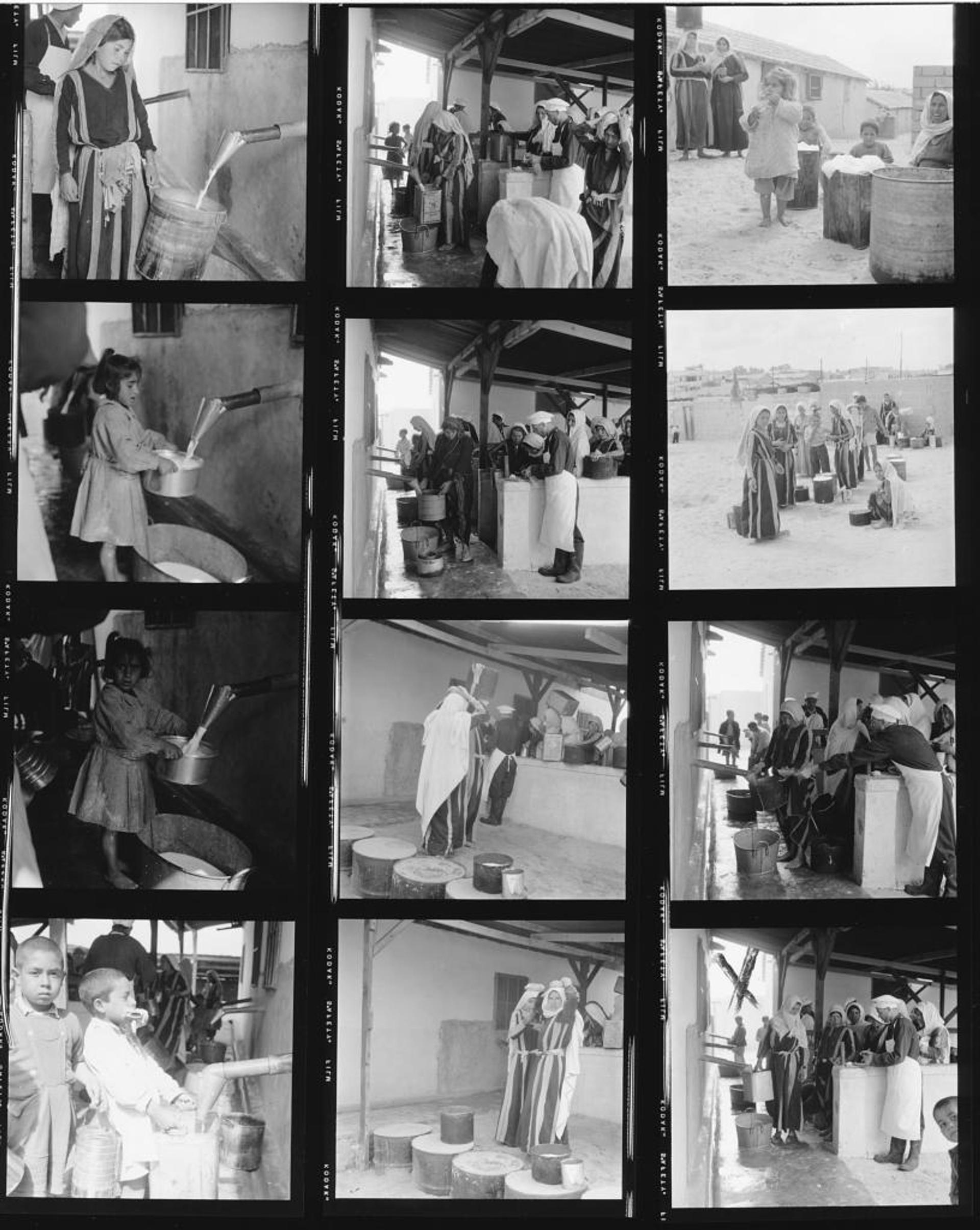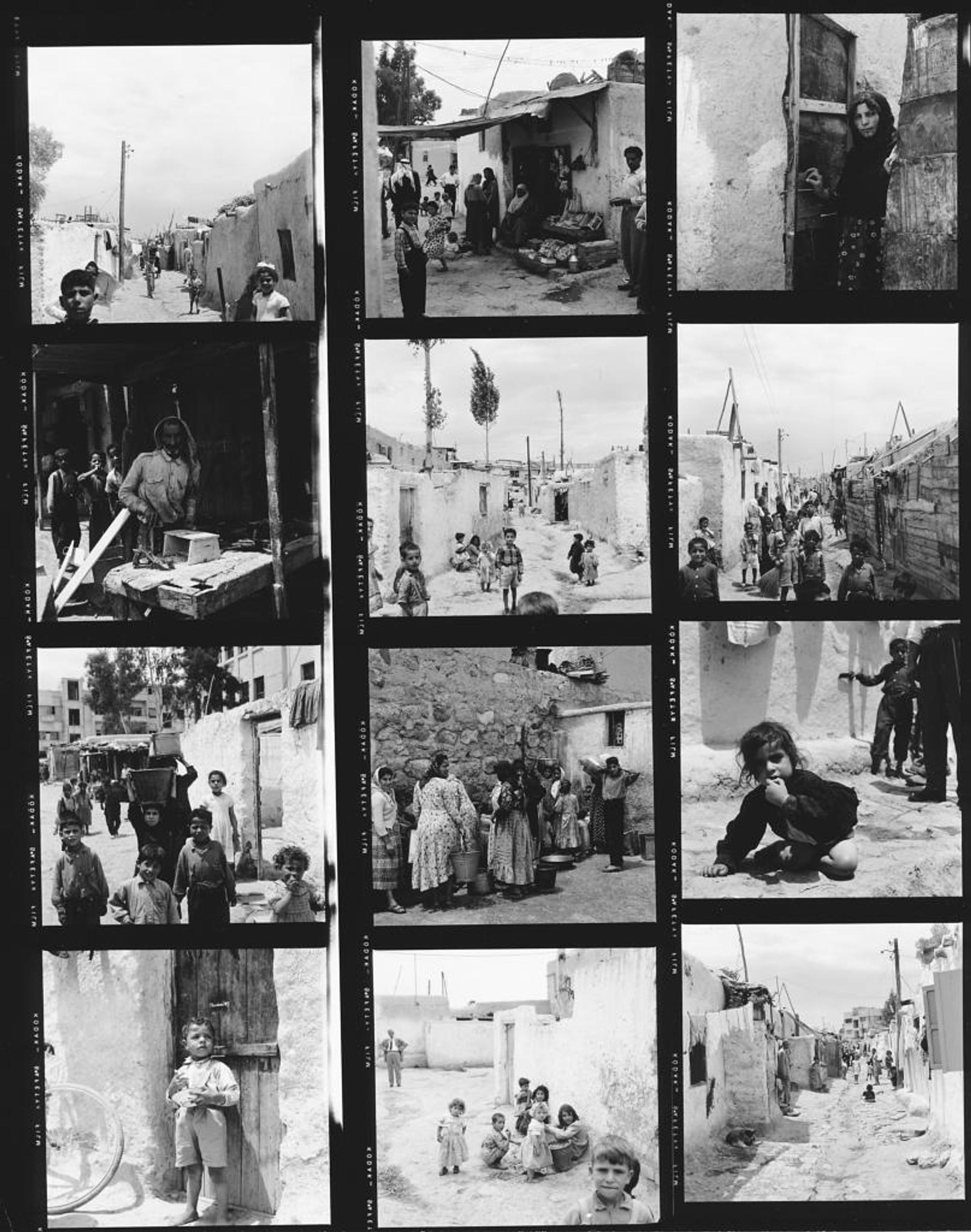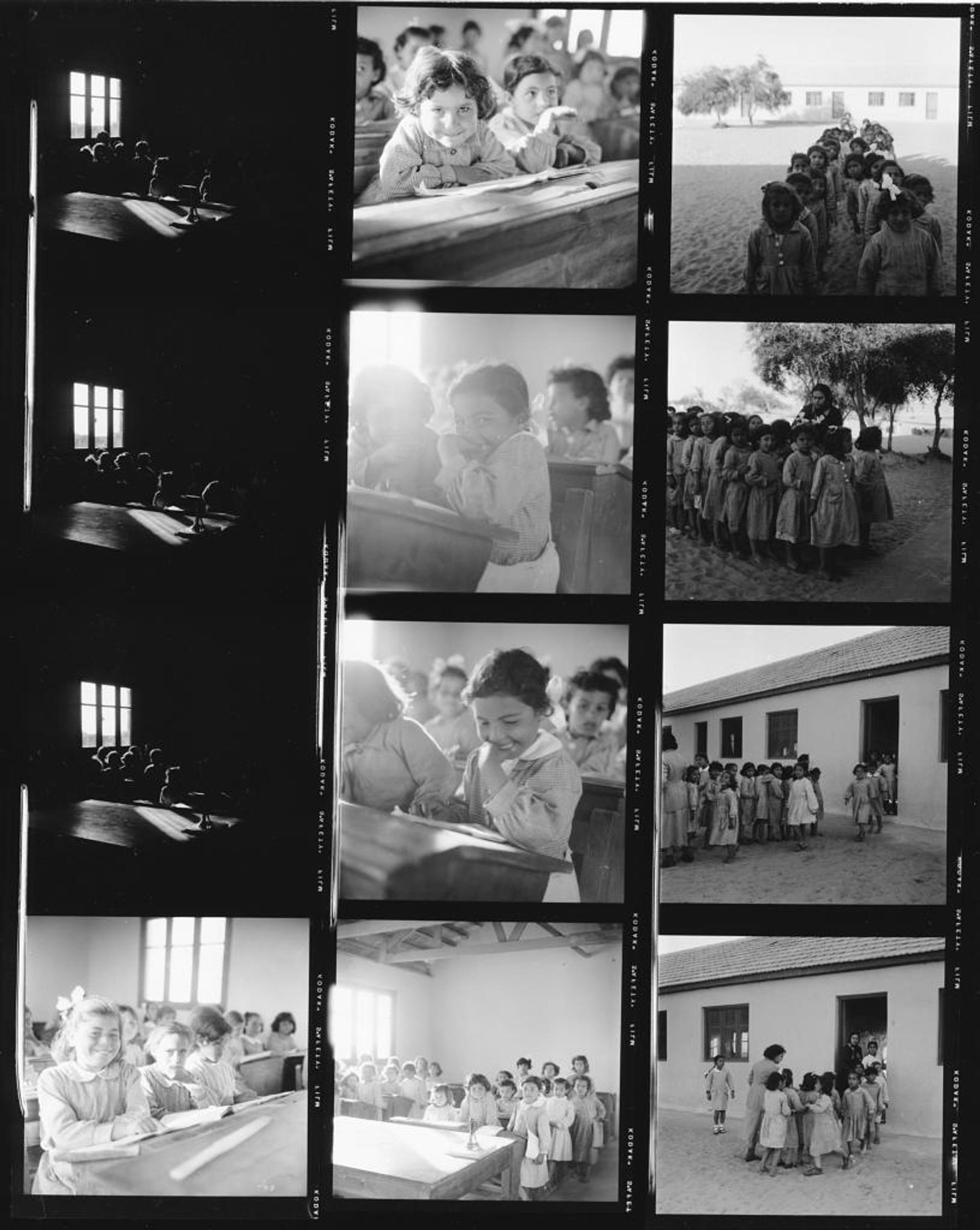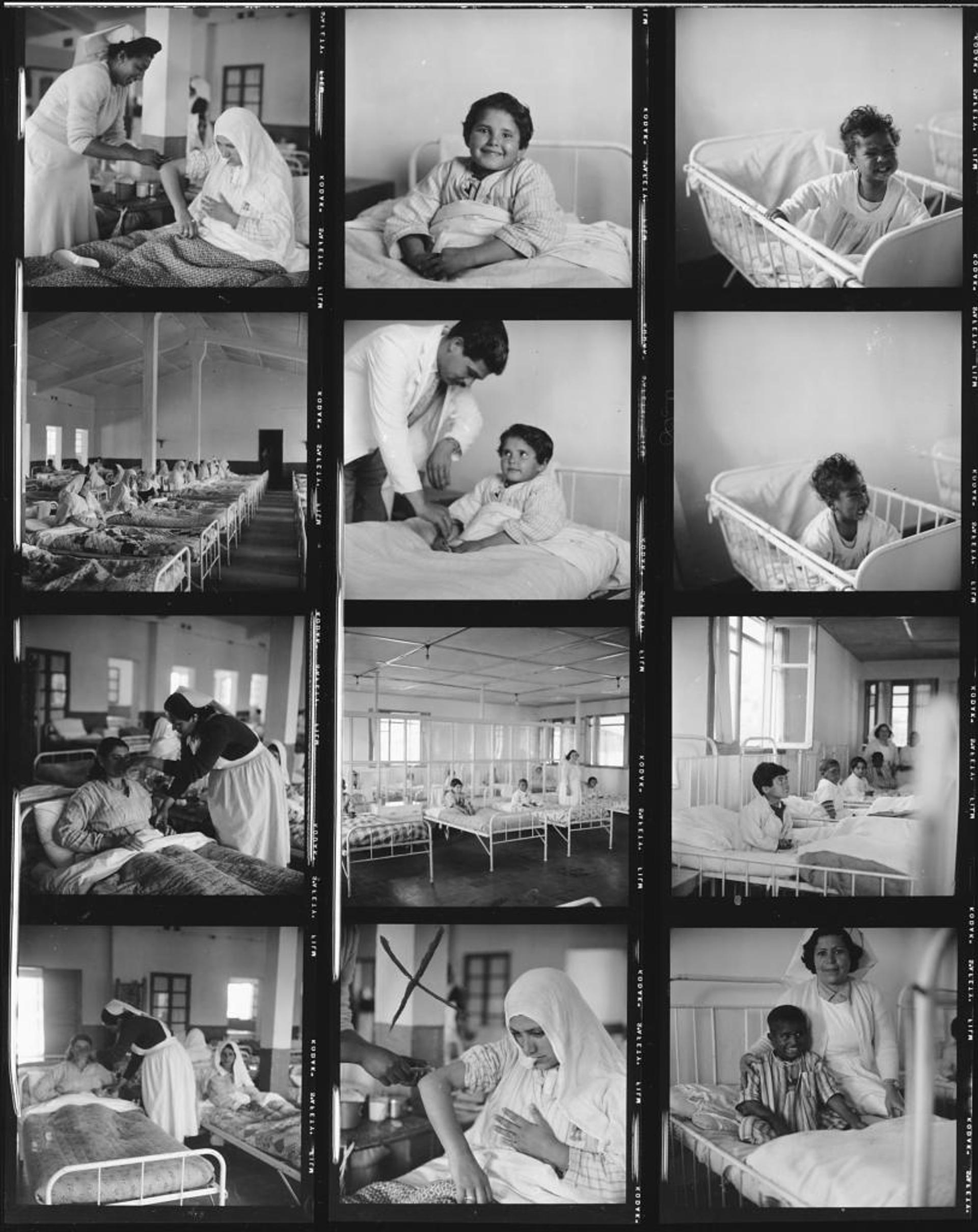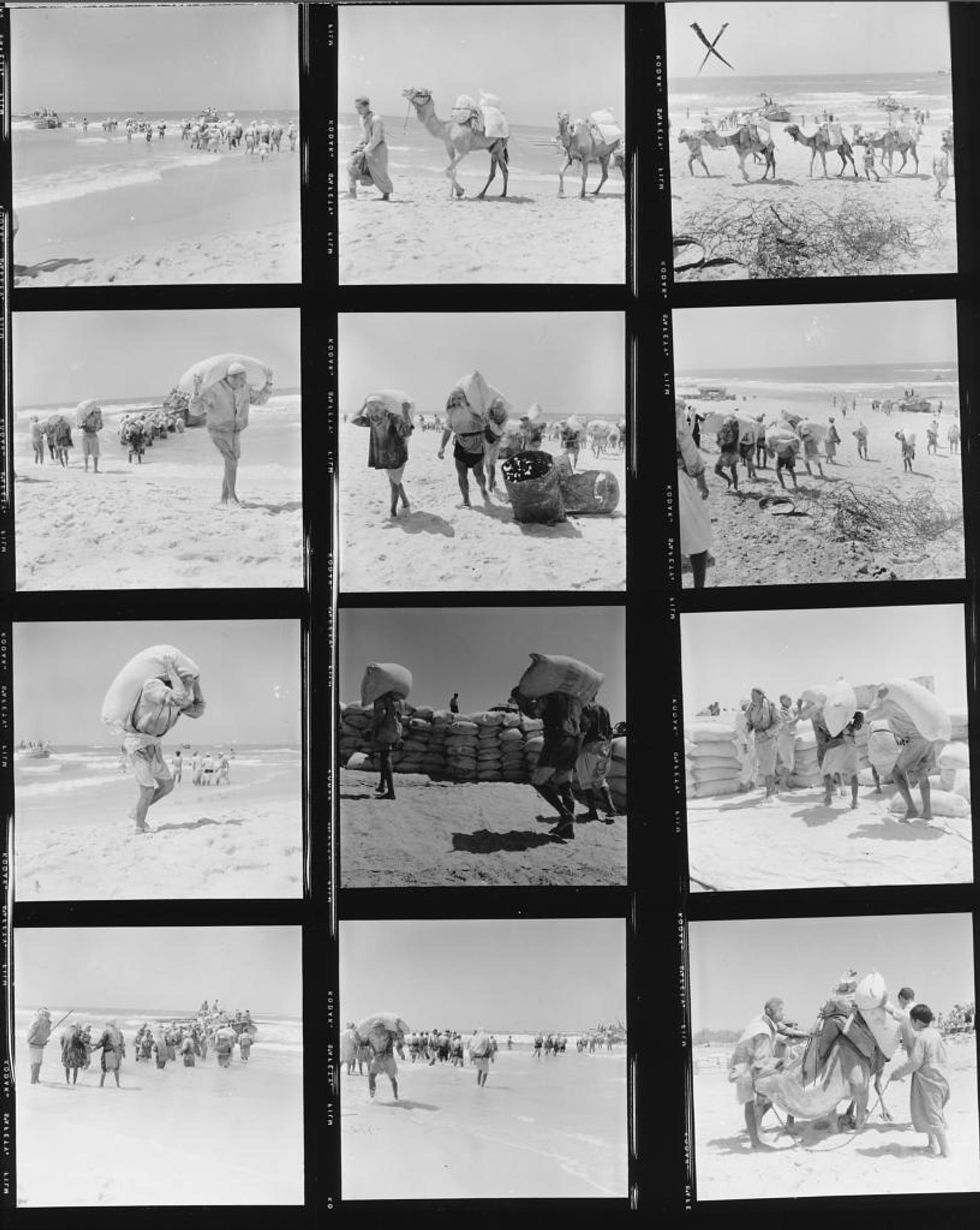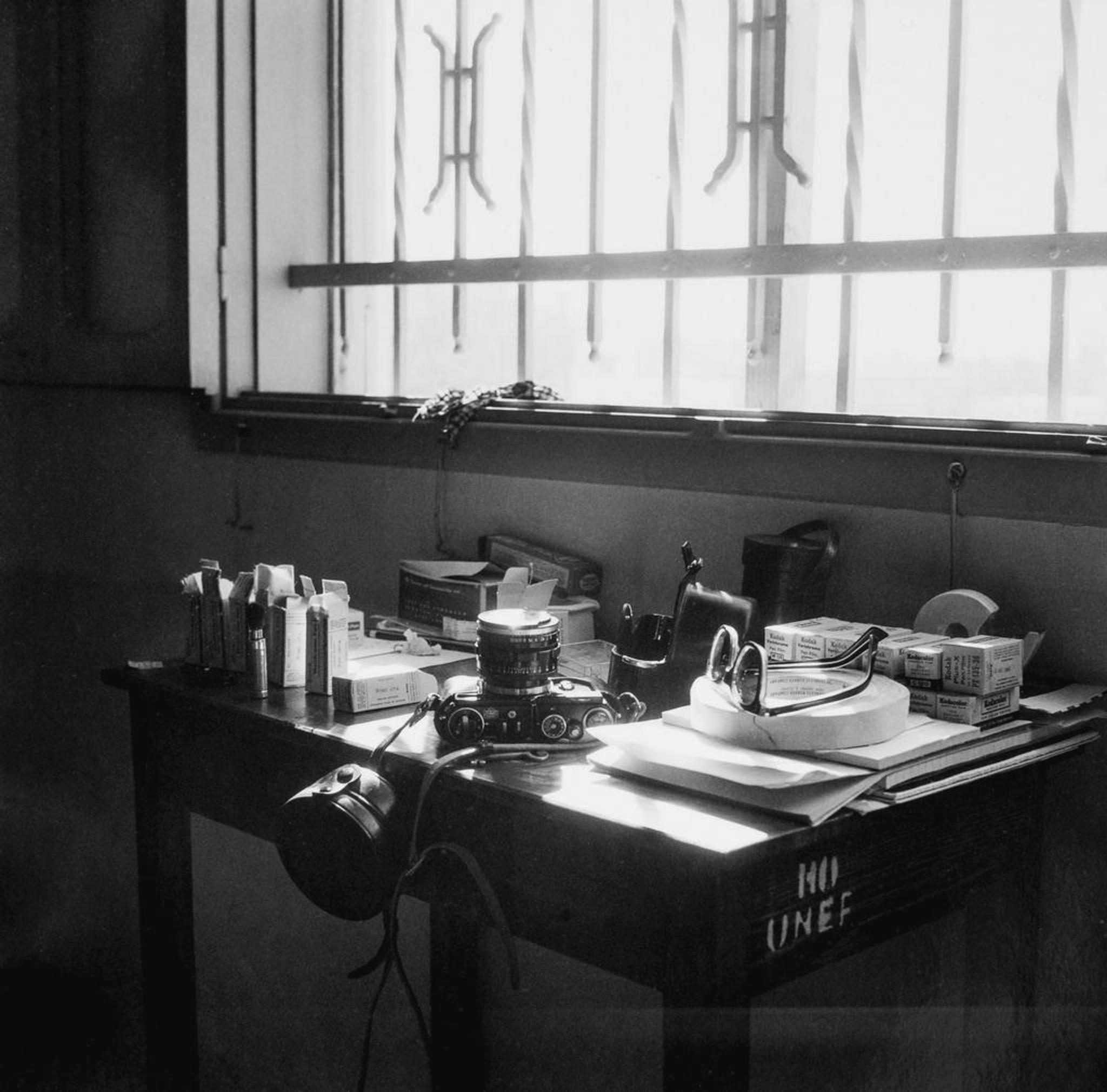
The photographer's assignment
Jørgen Grinde worked in the Photographs and Exhibitions Service at the United Nations in New York from 1946 to 1973. He mostly worked in the darkroom and performed administrative tasks. He made relatively few field trips, but his travels produced extensive visual material documenting refugees’ spaces and lives.
In part, what makes Jørgen Grinde’s collection unique is that it comprises a nearly complete collection of contact sheets from his assignments across Egypt, Gaza, Israel, Jordan, Lebanon and Syria. In the collection, 642 items are contact sheets. The collection gives us insight into the photographer’s work and commission, the work in the UN’s photographic department, and the UN’s relief work for Palestinian refugees in the region.
The contact sheets were an essential working tool for the photographer. A contact sheet is a form of photographic image made without a camera, where one or more negatives are placed directly onto a photographic paper. The result is a positive and easily manageable version of the negatives on paper, usually with 12 or 36 images on each sheet. In photographic work, a contact sheet is used as an additional stage between the development of the film and the copying of individual images, as it gives a storyboard of the entire film roll.
By seeing these sheets together, we see into the method and practice of a humanitarian photographer. Through them, we can see previously unpublished images and complete sequences and series of events that recall Grinde’s movements in and between the camps, sudden situations occurring and his choice of motifs. As such, they give a unique glimpse into Grinde’s method and work day-by-day. A cross marks each image that the UN ultimately chose for its use.
These contact sheets provide a more nuanced view of life in the refugee camps and the surrounding area than the individual images the UN selected and used in their communications work. Grinde’s mandate as an institutional photographer representing the UN was to produce objective and factual information material and not to engage in propaganda. At the same time, these images were created in a period when photography was seen as a unique tool for universal communication across cultural and linguistic borders.
While on mission, Grinde was continuously in contact with the photography department at the UN headquarters in New York. He sent film rolls from the Middle East accompanied with letters containing detailed information about each film roll, and he received contact sheets with letters in return from his superiors in the photographic department. These contained instructions, and advice, as can be seen in the reproduced letter from David Ritchie, Chief of the Photographs and Exhibitions Service.
In this letter, Grinde received detailed instructions as to what kind of photographs he should focus un, including specific requests. Ritchie states that close-ups and colour photography are needed to show “(...) the reasons why help is needed for the refugees”. This instruction surely tells of the strong directive for Grinde to provide images of the humanitarian gaze, but perhaps we might even see it as an expression of control over a photographer that sometimes also expanded the scope of that gaze.
Female patient receiving medical care in an UNRWA health clinic. A cross on the contact-sheet marks the image as selected by UN. Gaza Strip, April-May 1957.
Contact sheet showing Palestinian refugees transporting sacks of flour from a ship onto the beach as part of UNRWA’s relief work. Gaza Strip, May 1957.
Contact sheet showing Palestinian refugees planting Eucalyptus trees to cultivate the sand dunes as part of an UNRWA program. Gaza Strip, May 1957.
Photographer Jørgen Grinde with an envelope sent by the UN Photographs and Exhibitions Service. Unknown place, 1957.
